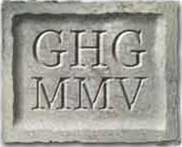
Guarlford History Group
The Guarlford StoryThe Parish CouncilIn 1848 and 1858, Acts of Parliament allowed, but did not require, local communities to set up Boards to provide the necessary services, such as water and public health, for their inhabitants. Later, in 1872, the Government divided the country into the somewhat oddly named, Urban and Rural Sanitary Authorities, the forerunners of District Councils. Then, in 1888, the Local Government Act established County Councils as the main administrative bodies for rural life; the Justices of Peace still retained their role as magistrates but were required to hand over their other duties to these newly formed County Councils. A few years later, in 1894, the Government created not only the Urban and Rural District Councils but also Parish Councils. These newly created civil parishes usually, but not always, adopted the boundaries of the existing ecclesiastical parishes. In his book The Death of Rural England, Alan Howkins says, "Although their subsequent history was to show they had little real power, these councils (Parish and District) were seen at the time as earth shattering." (p.23) They were seen to bring an end to feudal power and to usher in a new age of democracy. On Tuesday 4th December 1894, the Overseers of Great Malvern, Malvern's parish officers, convened a Parish Meeting to elect and install the first Guarlford Parish Council in accordance with the provisions of the new Local Government Act. This inaugural meeting was held in the Guarlford School Room and was chaired by Mr William Lambert, the Vestry Clerk. In Guarlford's case, the Civil Parish, when it was first formed, was much larger than both the ecclesiastical and the current civil parish, extending into Great Malvern and including Pickersleigh Road up to and beyond Pickersleigh Court. As a consequence, the Council was to consist of nine councillors rather than the seven we have today . . . |